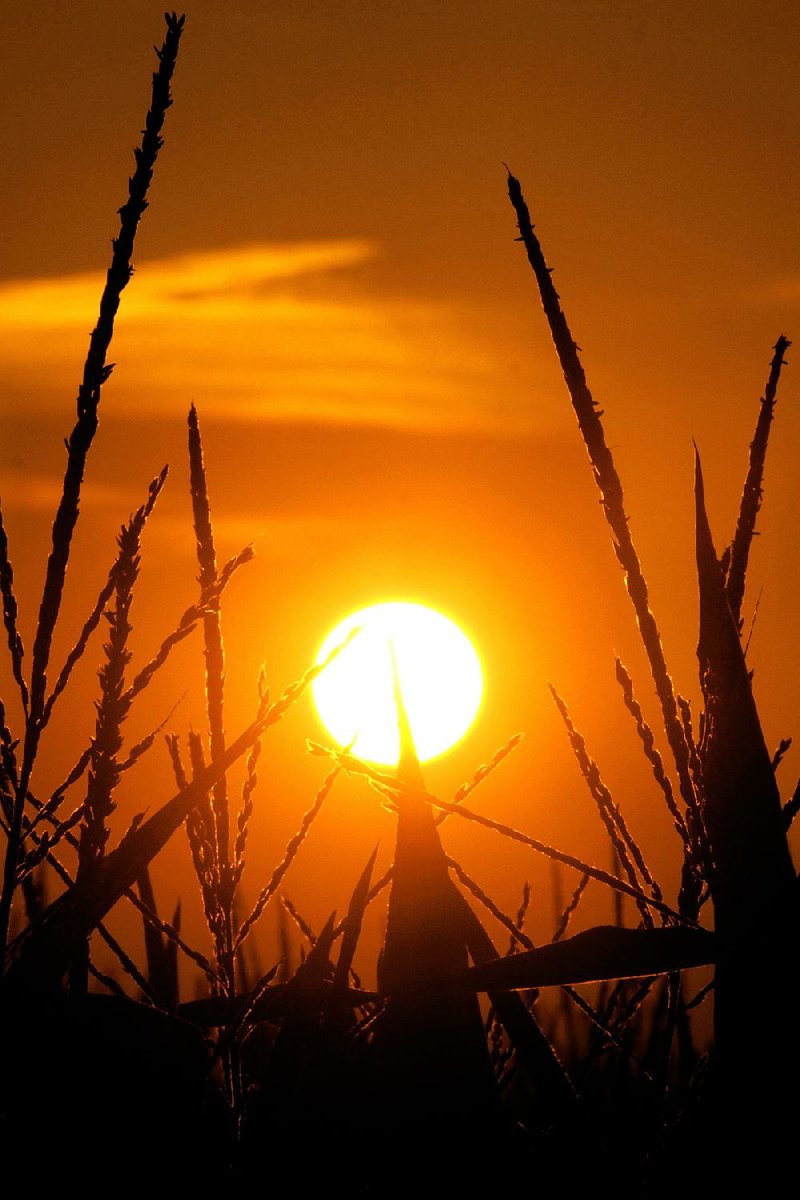ST. LOUIS — With a half century of farming under his belt, James Laird struggles to recall a summer worse than this one - the drought has turned the corn crop he once had high hopes for into a complete, kernel-less bust. Soon, he’ll be chopping it all to pieces and feeding it to his 150 head of cattle.
Yet Laird, 71, suspects there are other growers worse off with cornstalks half the size of even his. So he’s unsure why his farm near Waltonville, Ill., about 80 miles east of St. Louis, was chosen as the place Gov. Pat Quinn will get his first real look today at the drought’s ravages.
Quinn is expected to spell out whatever government relief might be available to drought affected growers and ranchers, his office having said last week that “everything is on the table.” But Laird, hopeful his crop insurance will defray some of his losses, guesses that in this cash strapped, deficit-running state, there’s only so much Quinn can offer.
“I don’t know what he can do with the condition the state’s in. Money’s so tight,” Laird said in advance of Quinn, whose scheduled unveiling of a state response plan comes just days after a special task force met to counsel him on ways to improve monitoring of the drought.
It’s a story playing out across the Midwest, where almost a third of the nation’s corn crop has been damaged by heat and drought so severe that a number of Corn Belt farmers in the hardest hit areas have cut down their crops midway through the growing season.
Corn farmers had expected this to be a record year when they sowed 96.4 million acres, the most since 1937. The U.S. Department of Agriculture predicted they would get 166 bushels per acre. But after months with little or no rain and widespread extreme heat, the USDA has revised that estimate, saying it now expects farmers to average just 146 bushels per acre this year.That would be an improvement from a decade ago, when the average was about 129 bushels.
As Quinn studied the matter last week and urged Illinoisans to pray for rain, the federal government hustled out what Agriculture Secretary Tom Vilsack called his agency’s “limited tools” of disaster relief for farmers and ranchers who are part of the widest drought in nearly 25 years. The USDA’s move spares governors the need to file requests for emergency relief, hastening the process.
Vilsack said more than 1,000 counties in some two dozen states - including 26 mostly southern counties in Illinois - automatically will qualify for disaster assistance if they’re in a severe drought for at least eight weeks or were in extreme drought this growing season.
As of last week, according to the U.S. Drought Monitor, at least 16 southern Illinois counties were listed as being in extreme or exceptional drought, while much of the state’s midsection and its northernmost reaches were in a severe drought.
In the key corn-producing state, “more than half the corn crop is in poor to very poor condition, and it’s fading fast,” Illinois Farm Bureau President Philip Nelson said Friday. “The southern third of Illinois is in dire straits, and the northern two-thirds is hanging on by a thread.”
“You don’t have to drive any distance to see how bad it is,” Nelson said, referring to southern Illinois, which he said has received only a half-inch of rain since April. “From the windshield, you can see they lost the corn crop.”
The Agriculture Department is streamlining the process for farmers to apply for federal disaster help, as well as reducing the interest rate on emergency loans to 2.25 percent from 3.75 percent. As much as $39 million is available under the program, though Vilsack said the projected cost to federal taxpayers is roughly $4 million since loans are ultimately repaid.
The federal government also will help farmers use part of the land set aside in a conservation program for hay or grazing, as the drought is expected to reduce the amount of corn available for feed.
Nearby states already have taken action. In Wisconsin, Gov. Scott Walker has declared a state of emergency in 42 southern counties because of drought or abnormally dry conditions. It’s the state’s first such declaration since 2009, and is good for 60 days, allowing permits to be issued more quickly for farmers to temporarily use stream or lake water for irrigation.
Vilsack and Walker encouraged farmers to report crop conditions to their local U.S. Farm Service Agency offices, as information can be used for requesting a federal disaster declaration.
The USDA’s crop-insurance program now covers 264 million acres, 1.14 million policies and $110 billion worth of liability on about 500,000 farms.
In Illinois, Illinois Farm Bureau spokesman John Hawkins said 60 to 80 percent of the acreage is covered by some form of insurance.
Laird figures his crop insurance will “probably pay bills” related to his seed and fertilizer costs, “but it won’t make the payment on machinery.” Laird still holds out hope that his 300 acres of soybeans will pan out.
“We had high expectations. Then, it just quit,” he said of the corn. “After 11 or 12 straight days of 100-plus heat, and that really cooks the crops.”
Front Section, Pages 4 on 07/16/2012

